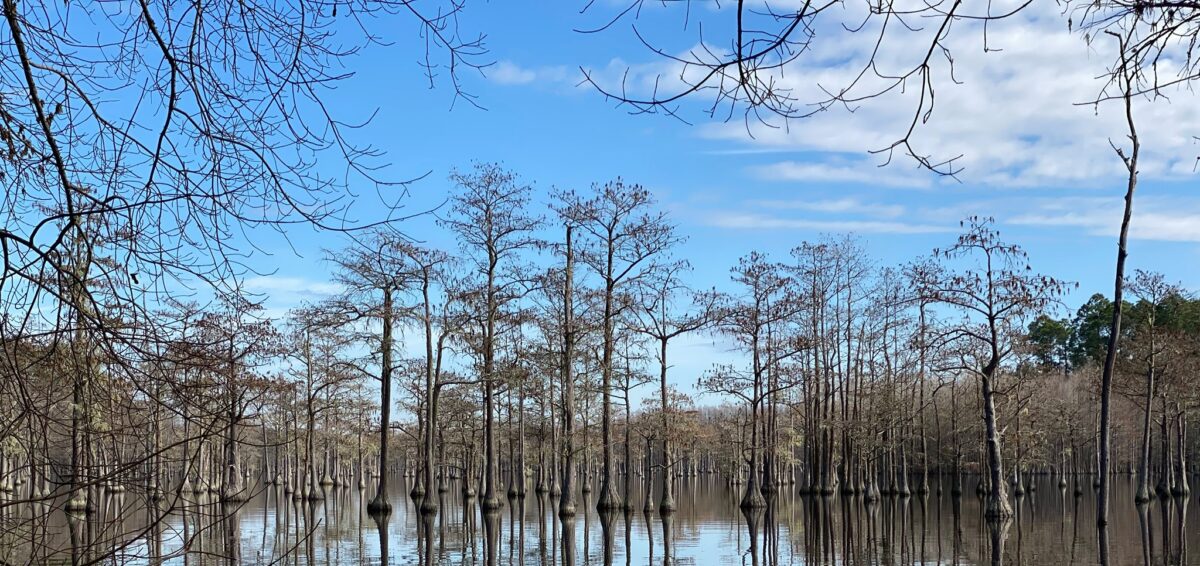The Carbon Pollution Standards for new power plants announced by the Environmental Protection Agency (EPA) on August 3rd confirm that Plant Washington will not get a “pass”, adding yet another hurdle to the development of one of the last proposed new coal plants in the country.
The new standards rely on partial capture and storage of carbon dioxide emissions. Plant Washington project spokesman Dean Alford has said that such a standard will result in cancellation of the coal-fired project because it was not designed to meet the standard. To avoid that outcome, the project developer, Power4Georgians, LLC (P4G) sought to convince EPA that the project had “commenced construction” when the standards for new sources were first proposed in January 2014. Under such circumstances, Plant Washington would be considered an existing source exempt from the new standards

But as Alford and P4G are now finding, there’s a difference between saying something and proving it.
Almost two years ago, in the draft version of the standards, the EPA specifically addressed Plant Washington and another proposed coal-fired plant in Kansas. The agency took the developers at their word that the plants were under construction and therefore qualified as existing sources. But EPA also said that if either plant failed to qualify as an existing source, and was therefore classified as a new source, the agency would consider granting special standards due to the unique circumstances that both already had their construction permits. The idea was that these two sources, the last two coal plants still supposedly under development in the country, would get special treatment – perhaps a standard less stringent than that applied to other new sources. Otherwise the two lingering plants might not get built despite their “sunk costs.”
But last week, in the final rule, EPA said it is “unaware of any physical construction that has taken place at the proposed Plant Washington site,” and noted that a recent audit of the project had described it as “dormant.” EPA said it appears that Plant Washington did not commence construction when the new source rule was proposed, and would therefore likely be considered a new source should it ever be constructed.
The EPA pointed out that in October 2014, P4G received an 18-month extension on Plant Washington’s air permit from the Georgia Environmental Protection Division. The EPA went on to say that the possibility of Plant Washington being built and operating is “too remote” to merit an exemption from the new carbon emission standards.
So Plant Washington is not an existing source. But what kind of carbon standard will it get? Remember that EPA said it would give Plant Washington and the Kansas project their own new source carbon standards. Well, on this point, EPA punted. Why? Because the agency views it as so unlikely that these projects will actually go forward that it doesn’t want to spend the time coming up with individualized standards. In the agency’s words, “because these units may never actually be fully built and operated, we are not promulgating a standard of performance at this time because such action may prove to be unnecessary.”
Ouch.
EPA puts the ball P4G’s court, telling the developer that it must formally request a determination of its status — new or existing — before EPA can decide whether and what kind of standards should apply to its carbon emissions.
P4G has had the ability since January 2014 to seek this so-called “applicability determination,” which would clear up once and for all the question of its status under the new standards. In fact, under Alford’s leadership, P4G sought such an “applicability determination” from the Georgia Environmental Protection Division, but later chose to withdraw that request before the state agency could respond. Rather than clarify the project’s status, Alford opted to pursue an 18-month extension of the construction deadline under Plant Washington’s state-issued air permit. Alford got the extension, but this did little to convince EPA of P4G’s claim that the project had commenced construction in January 2014. Instead, EPA arrived at the opposite conclusion: that Plant Washington is going nowhere fast.
Thanks to EPD’s generosity, Plant Washington still has 8 months left on its deadline to construct under the air permit. But the project’s water discharge permit, another critical piece of the project, expired in March of this year. P4G failed to timely file an application to renew the permit prior to its expiration, prompting EPD to fine P4G. EPD gave P4G thirty days to cure the defect but P4G missed that deadline as well. These are not the actions of a project developer intent on meeting its construction deadline.
And here in Washington County, there are no signs the coal-fire project is going forward, even at a snail’s pace. No ground has been broken, no Power Purchase Agreements have been announced, and no financier willing to pour the necessary billions into the project has emerged.
The EPA was correct in its refusal to exempt Plant Washington from the new carbon emission
standards. The plant is not needed and would be a major source of carbon emissions.
Over 8.5 years have passed since this boondoggle plant was first announced, and its future is not one bit brighter than it was on the cold, gray, January day when it was unveiled. If Mr. Alford returns for yet another permit extension next year, the state would be wise to tell him that the final buzzer has sounded and no more time can be added to the game clock
